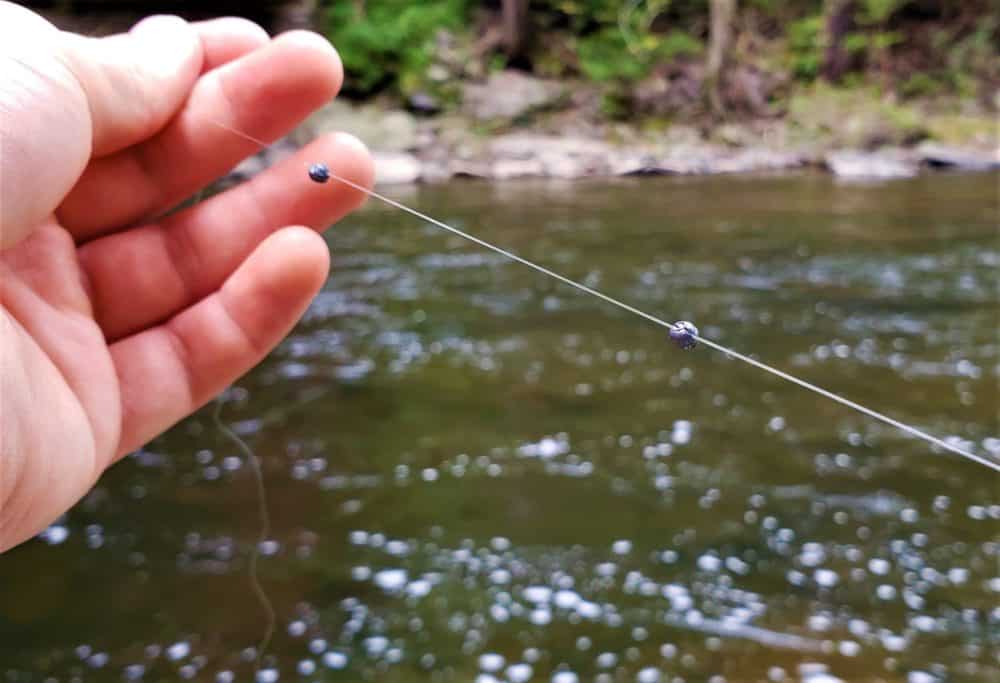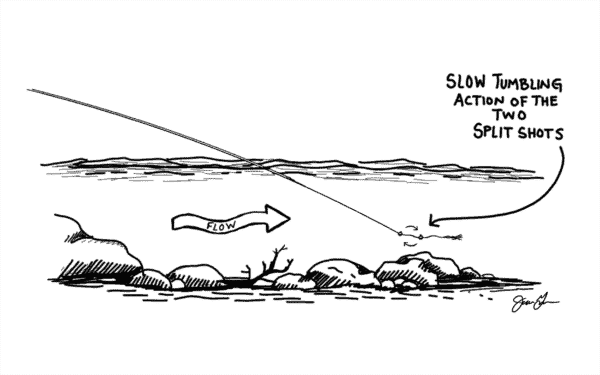When it comes to nymphing for trout, the addition of split shots to your rig can be the game-changer between a successful catch and a missed opportunity. The strategic use of supplemental weight, such as split shots and heavier beads, serves not only to hasten the descent of your nymphs but crucially positions your flies within the water column where fish actively feed—along the bottom.
Understanding when to add or remove weight is paramount in nymphing, and knowing how to wield this weight effectively is equally vital.

Key Scenarios for Adding Weight:
- High and fast water: In such conditions, additional weight helps your nymphing rig reach the desired depth promptly.
- Deep pools: The depth of pools requires extra weight to ensure your flies are effectively presented.
- Light flies: When your nymphs are too lightweight, incorporating split shots becomes essential for proper sinking.
- Insufficient depth: If your nymphs aren’t reaching the desired depth, adding weight becomes a necessity.
- Strong current: When facing a robust current, weight aids in stabilizing your rig for better control.
- Utilizing Two Split Shots: Consider employing two split shots instead of one. This prevents your nymphing rig from getting ensnared between rocks and boulders, enhancing its maneuverability. The dual weights work collaboratively, dislodging each other from potential crevices.
Streamers and Split Shots:
Enhance your streamer action by incorporating split shots. Placing two split shots above the streamer induces a jigging, up-and-down motion during retrieval, mimicking the natural movement of a dead minnow or baitfish along the bottom.

Adjusting Weight According to Fly Speed:
Given that many flies lack significant weight, it’s advisable to increase weight when your flies move too swiftly. Whether you’re dealing with light nymphs or unweighted flies, the addition of tungsten putty or split shots proves effective in slowing down the presentation, aligning with the constant feeding behavior of trout along the bottom.
Adaptation: The Snag Dilemma:
If you find yourself frequently snagging, it’s time to make weight adjustments. The rule of thumb is to subtract weight gradually. However, if snags persist every dozen casts, maintaining the current weight is recommended. To fine-tune your rig:
- Remove or replace a split shot with a smaller one.
- Substitute the heaviest flies with lighter alternatives.
- Consider a combination of both strategies.
Nymphing success hinges on the angler’s ability to adapt to changing conditions. Experimentation with weight adjustments ensures optimal presentation and increases the likelihood of a fruitful fishing experience.
Images/Source: FlyCrate





